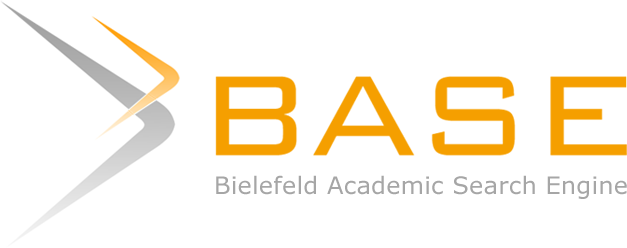Relationship and Benefits of Physical Education for Children and Adolescents
DOI:
https://doi.org/10.51574/judikdas.v1i4.458Keywords:
Benefits, Physical Education, Children and AdolescentsAbstract
Physical education is an important component of general education because it promotes individual growth through physical exercise and natural human movement. Physical education is a series of planned and structured learning experiences to meet the developmental and behavioral requirements of each child and adolescent. Physical education is a process of interaction between students and their environment which is handled through organized physical exercise in order to realize a complete human being which includes physical, psychomotor, cognitive, and emotional elements. In fact, many parents are not able to maximize the potential of their children, so they only need to take care of themselves physically and provide the amount of food needed, but lack of exercise stimulation. Being realistic, accepting yourself and people as they are, adapting quickly, being able to handle problems objectively, not depending on others, empathizing, having a sense of humor, being creative, and appreciating difficulties are the characteristics of emotional maturity.
References
Aenon, N., Iskandar, I., & Rejeki, H. S. (2020). FAKTOR FAKTOR YANG MEMPENGARUHI RENDAHNYA PRESTASI BELAJAR PENDIDIKAN JASMANI. Jurnal Ilmu Keolahragaan, 3(2). https://doi.org/10.26418/jilo.v3i2.42965
Arifin, S. (2017). PERAN GURU PENDIDIKAN JASMANI DALAM PEMBENTUKAN PENDIDIKAN KARAKTER PESERTA DIDIK. Multilateral Jurnal Pendidikan Jasmani Dan Olahraga, 16(1). https://doi.org/10.20527/multilateral.v16i1.3666
Fitron, M., & Negeri, U. (2020). Survei Tingkat Persepsi Siswa Terhadap Konsep Pendidikan Jasmani Di Sekolah Menengah Atas. Jurnal Science and Health, 2(5).
Iswanto, A., & Widayati, E. (2021). Pembelajaran pendidikan jasmani yang efektif dan berkualitas. MAJORA: Majalah Ilmiah Olahraga, 27(1). https://doi.org/10.21831/majora.v27i1.34259
Komarudin. (2002). Penilaian Hasil Belajar Pendidikan Jasmani dan Olahraga. PT. Remaja Rosdakarya.
Mashuri, H., Puspitasari, I. C., & Abadi, S. M. (2019). Pendidikan Jasmani dan Olahraga: Sebuah Pandangan Filosofi. Prosiding SEMDIKJAR (Seminar Nasional Pendidikan Dan Pembelajaran), 3.
Paturusi., A. (2012). Manajemen Pendidikan Jasmani dan Olahraga. PT Rineka Cipta.
Rozi, F. (2022). Penguatan Dasar Pendidikan Jasmani dan Teknologi Pendidikan pada Kelompok Kerja Guru Pendidikan Jasmani. PUNDIMAS: Publikasi Kegiatan Abdimas, 1(1). https://doi.org/10.37010/pnd.v1i1.552
Sugiyono. (2013). Metode Penelitian Pendidikan Pendekatan Kuantitatif, Kualitatif dan R&D. Alfabeta.
Sukintaka. (2004). Teori Pendidikan Jasmani: Filosofi, Pembelajaran dan Masa Depan. Penerbit Nuansa.
Sukmadinata, N. S. (2015). Metode Penelitian Pendidikan: Penelitian Memberikan Deskripsi Eksplanasi Prediksi Inovasi Dan Juga Dasar Dasar Teoritis Bagi Penengembangan Pendidikan. Remaja Rosdakarya.
Wicaksono, L. (2020). Pelaksanaan Pendidikan Jasmani dan Olahraga Anak Usia Dini. Jiunal Pendidikan Anak.
Downloads
Published
How to Cite
Issue
Section
License
By submitting an article manuscript, the author agrees to all policies set forth by the journal and publisher.
The author declares that:
- They have been authorized by their co-authors to enter into this agreement.
- The work described has not been officially published before, except in the form of an abstract or as part of a lecture, review, thesis, or preprint journal.
- The work is not currently under consideration for publication elsewhere.
- Its publication has been approved by all authors and by the responsible authorities—either implicitly or explicitly—of the institution where the work was conducted.
- They have obtained the right to reproduce any material that has been published or copyrighted elsewhere.
- They agree to the following license and copyright agreement.
License and Copyright Agreement
Authors publishing in Jurnal Ilmu Pendidikan Dasar Indonesia agree to the following terms:
- Authors retain copyright and grant the journal the right of first publication with the work simultaneously licensed under a Creative Commons Attribution-ShareAlike (CC BY-SA 4.0) License, which allows others to share the work with acknowledgment of the authorship and initial publication in this journal.
- Authors may enter into additional non-exclusive contractual agreements for the distribution of the journal's published version of the work (e.g., posting it to an institutional repository or publishing it in a book), with acknowledgment of its initial publication in this journal.
- Authors are permitted and encouraged to post their work online (e.g., in institutional repositories or on their websites) before and during the submission process, as this can lead to productive exchanges, as well as earlier and increased citation of the published work.



1.png)
3.png)




